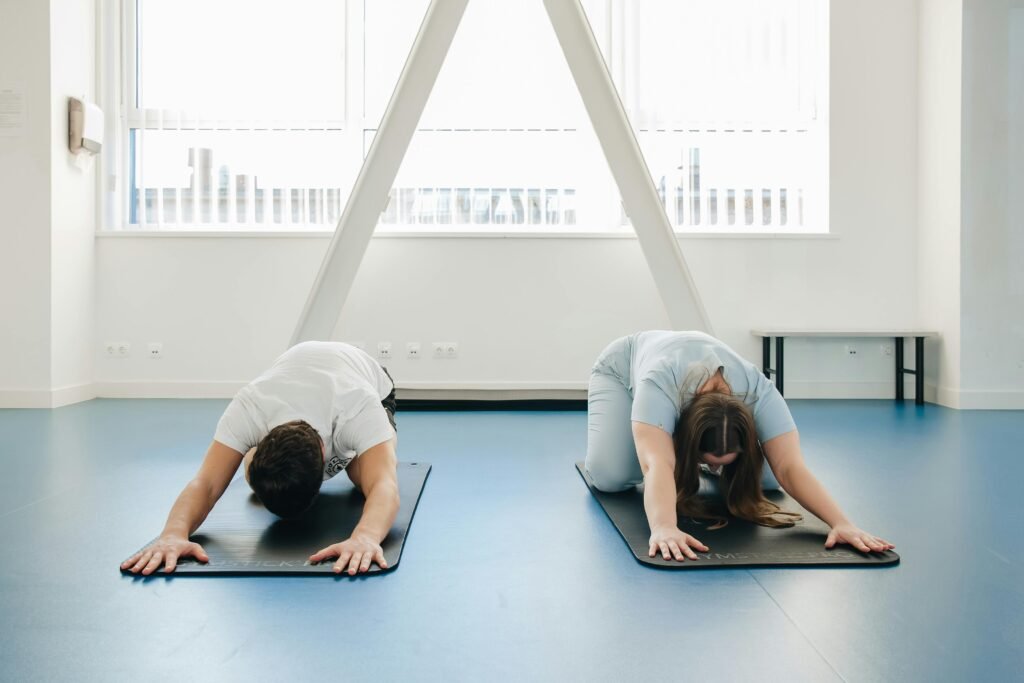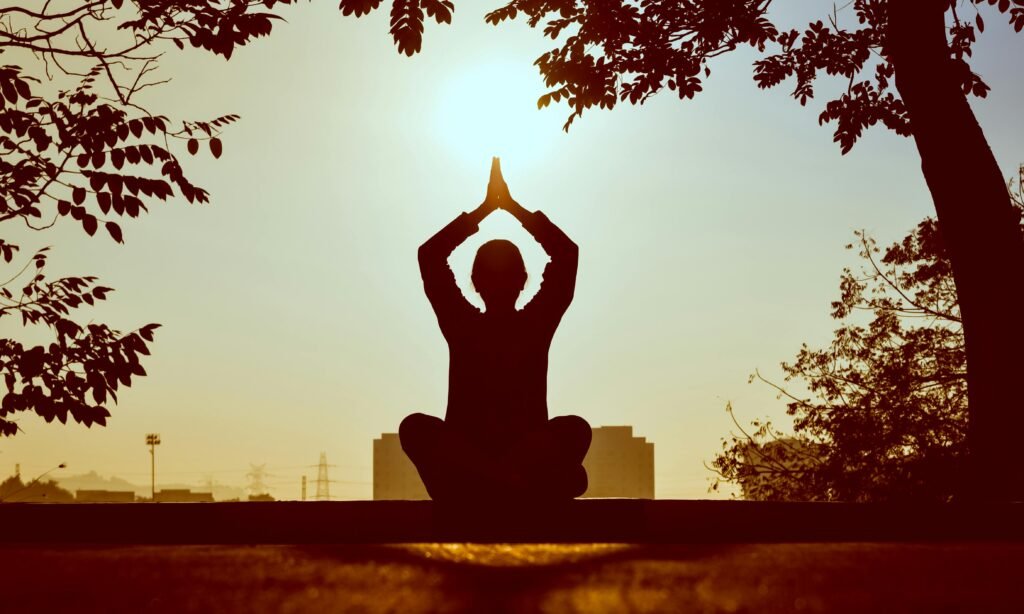Hello, beautiful moms-to-be and supportive partners! Today, we’re diving into a vital and often debated topic: yoga during pregnancy. Pregnancy is a miraculous journey, but it comes with its unique set of challenges and joys. With all the changes happening in your body, maintaining physical activity is crucial, but it has to be safe and beneficial. So, let’s embark on this engaging, somewhat polarizing, and certainly over-the-top journey into the world of pregnancy yoga.

Why Yoga During Pregnancy?
Before we delve into the dos and don’ts, let’s talk about why yoga is an excellent choice during pregnancy.
Physical Benefits
- Strength and Flexibility: Pregnancy yoga helps strengthen the muscles needed for childbirth and improves overall flexibility.
- Balance and Stability: As your center of gravity shifts, yoga helps you maintain balance and stability.
- Pain Relief: Alleviates common pregnancy discomforts like back pain, sciatica, and hip pain.
- Improved Circulation: Enhances blood flow, reducing swelling and improving overall cardiovascular health.
Mental and Emotional Benefits
- Stress Reduction: Yoga promotes relaxation and reduces anxiety.
- Mindfulness: Helps in staying present and connected with your growing baby.
- Better Sleep: Promotes restful sleep by calming the nervous system.
Learn more about why yoga is good for mental health.
Preparing for Labor
- Breath Control: Pranayama techniques can be invaluable during labor.
- Pelvic Floor Strengthening: Prepares the body for a smoother delivery and quicker recovery post-birth.
Now, let’s get into the juicy details: which yoga poses are your best friends during pregnancy and which ones should you bid adieu, at least for now.
Preferred Yoga Poses During Pregnancy
These poses are generally considered safe and beneficial for most pregnant women. However, always listen to your body and consult with your healthcare provider before starting any new exercise regimen.
1. Cat-Cow Pose (Marjaryasana-Bitilasana)
Benefits:
- Relieves back pain
- Improves spinal flexibility
- Encourages baby to move into the optimal position for birth
How to Do It:
- Start on all fours with wrists under shoulders and knees under hips.
- Inhale, arch your back (cow pose).
- Exhale, round your spine (cat pose).
- Repeat for several breaths.
2. Child’s Pose (Balasana)
Benefits:
- Gentle stretch for the back and hips
- Calms the mind
- Relieves stress and fatigue
How to Do It:
- Kneel on the floor, big toes touching, knees wide apart.
- Sit back on your heels, then fold forward, extending your arms.
- Rest your forehead on the mat and breathe deeply.

3. Warrior II (Virabhadrasana II)
Benefits:
- Strengthens legs and pelvic floor
- Improves stamina and concentration
- Opens the hips
How to Do It:
- Stand with feet wide apart, right foot turned out, left foot slightly in.
- Bend the right knee, keeping it over the ankle.
- Extend arms parallel to the floor, gaze over the right hand.
- Hold for several breaths, then switch sides.
4. Goddess Pose (Utkata Konasana)
Benefits:
- Strengthens lower body
- Opens hips and groin
- Improves balance
How to Do It:
- Stand with feet wide, toes turned out.
- Bend knees, lowering into a squat.
- Raise arms to shoulder height, elbows bent, palms facing forward.
- Hold and breathe deeply.
- Take support at the back if required.
5. Bound Angle Pose (Baddha Konasana)
Benefits:
- Opens hips and groin
- Alleviates lower back pain
- Promotes relaxation
How to Do It:
- Sit with legs extended.
- Bend knees, bringing soles of the feet together.
- Hold feet with hands, gently pressing knees towards the floor.
- Sit tall and breathe deeply.
6. Standing Forward Bend (Uttanasana)
Benefits:
- Stretches the back and hamstrings
- Relieves stress and anxiety
- Improves digestion
How to Do It:
- Stand with feet hip-width apart.
- Hinge at hips, folding forward.
- Let arms hang or hold opposite elbows.
- Relax head and neck, breathing deeply.
7. Legs Up the Wall (Viparita Karani)
Benefits:
- Reduces swelling in feet and legs
- Relieves lower back pain
- Promotes relaxation
How to Do It:
- Sit sideways next to a wall.
- Swing legs up the wall as you lower your back to the floor.
- Adjust distance from the wall for comfort.
- Rest and breathe deeply.
Poses to Avoid During Pregnancy
While yoga offers many benefits, certain poses can be risky for pregnant women. Here are some poses you should avoid:
1. Deep Backbends
Risks:
- Can overstretch abdominal muscles
- May cause lower back pain
Examples: Full Wheel Pose (Urdhva Dhanurasana), Camel Pose (Ustrasana)
2. Deep Twists
Risks:
- Can compress the uterus
- May disrupt blood flow to the baby
Examples: Revolved Triangle Pose (Parivrtta Trikonasana), Seated Spinal Twist (Ardha Matsyendrasana)
3. Poses Lying on Your Back
Risks:
- Can compress the vena cava, reducing blood flow to the baby
- May cause dizziness or discomfort
Examples: Corpse Pose (Savasana), Supine Bound Angle Pose (Supta Baddha Konasana)
4. Inversions
Risks:
- Risk of falling
- Can cause dizziness and disorientation
Examples: Headstand (Sirsasana), Shoulder Stand (Sarvangasana)
5. Hot Yoga
Risks:
- Can raise core body temperature to unsafe levels
- May lead to dehydration and overheating
Examples: Bikram Yoga, Hot Vinyasa
6. Poses That Compress the Belly
Risks:
- Can put pressure on the abdomen
- May restrict blood flow to the baby
Examples: Boat Pose (Navasana), Locust Pose (Salabhasana)
Customizing Your Yoga Practice
Pregnancy is a unique experience, and every woman’s body responds differently. Here are some tips to customize your yoga practice:
1. Listen to Your Body
Your body will give you signals about what feels right and what doesn’t. Pay attention and adjust accordingly.
2. Use Props
Props like blocks, bolsters, and straps can provide support and make poses more accessible.
3. Modify Poses
Don’t be afraid to modify poses to accommodate your growing belly and changing body. For instance, use a chair for balance in standing poses or practice poses near a wall for added support.
4. Stay Hydrated
Drink plenty of water before, during, and after your practice to stay hydrated.
5. Avoid Overstretching
Pregnancy hormones like relaxin can make your ligaments more flexible. Be mindful not to overstretch and cause injury.

Breathwork and Meditation
In addition to physical poses, breathwork (pranayama) and meditation are essential components of a prenatal yoga practice.
Breathwork
- Ujjayi Breath: Helps calm the mind and regulate the breath.
- Nadi Shodhana (Alternate Nostril Breathing): Balances the nervous system and reduces anxiety.
Meditation
Meditation can help you connect with your baby, reduce stress, and prepare mentally for childbirth. Practice mindfulness or guided meditations for a few minutes each day.
Prenatal Yoga Classes
Joining a prenatal yoga class can be incredibly beneficial. Here’s why:
1. Expert Guidance
Qualified instructors can provide safe and appropriate modifications for pregnant women.
2. Community Support
Connecting with other expectant mothers can provide emotional support and a sense of community.
3. Structured Practice
Classes offer a structured and consistent practice that can be challenging to maintain on your own.
Real-Life Stories: Yoga Transformations During Pregnancy
Let’s hear from real moms who’ve embraced yoga during their pregnancies.
Emily’s Story
Emily, a first-time mom, found solace in prenatal yoga. She says, “Yoga became my sanctuary. It helped me manage my anxiety and stay active. The breathing techniques were lifesavers during labor!”
Lisa’s Journey
Lisa, a mom of two, practiced yoga throughout both pregnancies. “Yoga kept me grounded and physically prepared. The community in my prenatal class was amazing. We shared our journeys and supported each other,” she shares.
Maria’s Experience
Maria, an experienced yogi, modified her practice during pregnancy. “I had to let go of my usual intense practice, but embracing gentler poses and meditation connected me deeply with my baby,” she recalls.
Final Thoughts: Embrace the Journey
Pregnancy is a unique and transformative journey. Yoga can be a powerful companion, offering physical, mental, and emotional benefits. Remember, it’s not about achieving perfection in poses but about honoring your body and nurturing your connection with your baby.
So, whether you’re a seasoned yogi or new to the practice, let yoga support you through this incredible journey. Roll out your mat, breathe deeply, and embrace the beautiful changes happening within you. Happy practicing, mamas!



